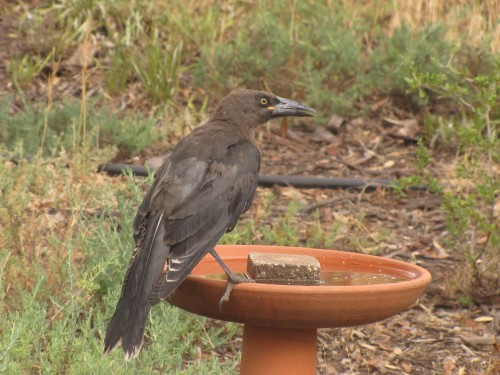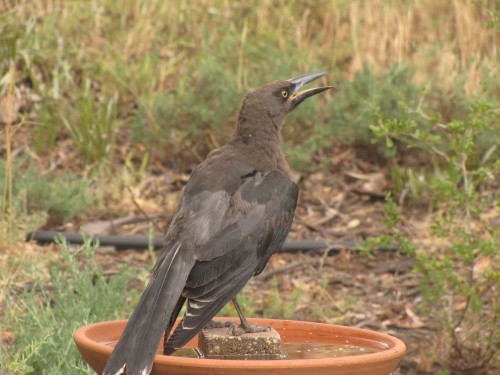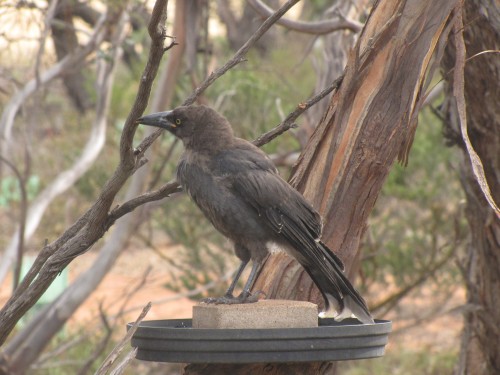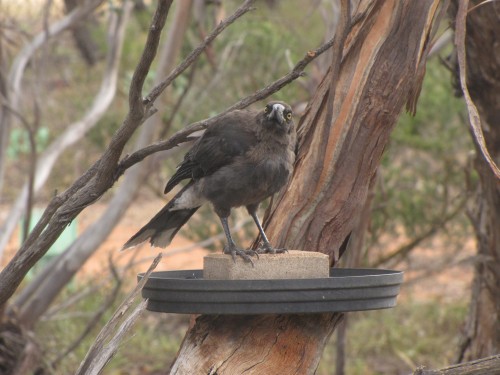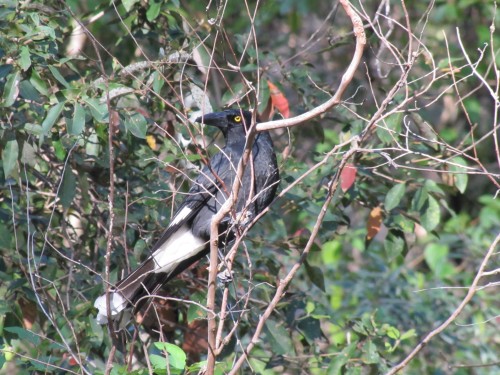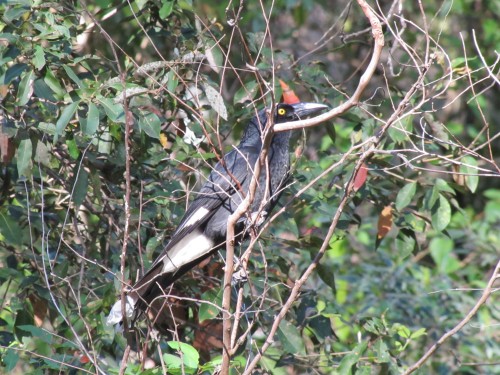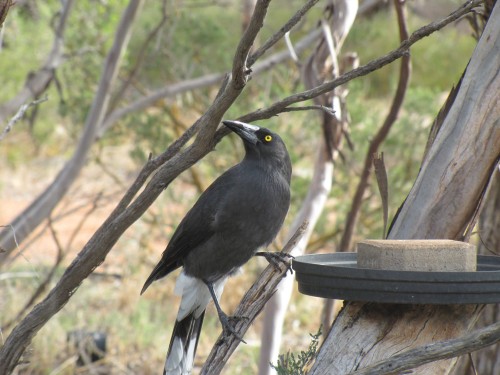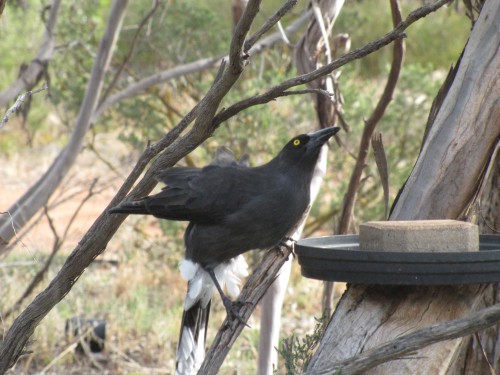Hot weather birding
Over recent posts I have written about the very hot conditions we have had here in South Australia this summer. I won’t bore you by stating the obvious yet again. When the weather gets much over 30C (86F) I tend not to go out birding, though I have on occasions been out in much hotter weather.
When the temperature soars here in Murray Bridge (80 km SE of Adelaide) I tend to stay indoors as much as possible. It is one of the joys of being ‘retired’. On these occasions we have the delight of a constant stream of birds coming to our bird baths. These containers are strategically placed in our garden where we can observe – and photograph – the birds at our leisure. On very hot days like we have had over recent months the stream has sometimes been a flood.
When the Grey Currawongs come to drink, most of the smaller birds keep their distance. I am not surprised by this; the Currawong’s bill and head is about the size of birds like the thornbills or the wrens. I guess that the smaller species know instinctively that the Currawong is capable of raiding their nests for eggs and baby birds, and so they remain at a respectful distance while the bigger birds are drinking.
During one of our recent hot spells this juvenile Grey Currawong came for a drink. I can tell that it is a young one not long out of the nest because of the downy feathers, as well as the yellow gap on the bill. Only a few days before these photos were taken I saw the juveniles being fed by the adults.
Once the Currawong had finished drinking, the smaller birds quickly returned.
Pied Currawong and that glaring eye
While we were having afternoon tea in the Lane Cove National Park in Sydney a Pied Currawong flew into a bush nearby. It stayed for a few moments before flying off again. When ever I see this species – and its cousin the Grey Currawong – I am taken by that glaring eye. It almost looks malevolent in intent.
Now it is very unscientific of me to assign human characteristics to a bird, but I can get away with it here because this doesn’t pretend to be a scientific site by any definition one cares to dredge up. I just want to share with the world my bird sightings, illustrating them where possible with photos I have taken.
Having said that, I must say that describing the currawong as being malevolent from a human point of view is not all that far from the truth. Granted – the currawong is not intentionally being nasty; it just seems that way from the viewpoint of compassionate humans – and a whole host of small birds and animals.
Currawongs eat a wide range of creatures, including smaller birds, bird eggs and nestlings, small reptiles, spiders, insects and will even steal take food at picnics, fruit from trees and garbage. All that may seem nasty and cruel to compassionate, animal-loving humans, but for the currawong it spells survival. The nestling of a honeyeater may mean the survival of the nestling of the currawong. It’s a huge, wild, nasty world out there.
And I still think its eye is rather evil.
Grey Currawong at the bird bath
When moved to our current home and five acre block nearly 30 years ago. Over that time I have recorded over a hundred different species that have visited or flown over. About 40 of those are resident – meaning they can be seen most days – and most of those have been recorded breeding here.
The locally common Grey Currawong was a notable species absent from my lists for several decades. We would occasionally hear one calling in the distance up the hill about a kilometre away. This is an area of thick mallee scrub. They rarely ventured down into our garden.
That all changed about ten years ago. Now this species is a frequent visitor in our garden and we see or hear one or more every few days. I still wouldn’t call it a resident species, though. On a few occasions a local breeding pair have brought their recently fledged off-spring to visit too.
Even rarer is a visit to one of our bird baths, but this, too, is changing. Last week I managed a few good photos of one bird as it was drinking. Those bright yellow eyes are quite penetrating, and I am not surprised that smaller birds – like the thornbills and honeyeaters – get very nervous when the currawongs are around, sending out warning calls. That large beak would easily gobble down a nestling by the look of it.
